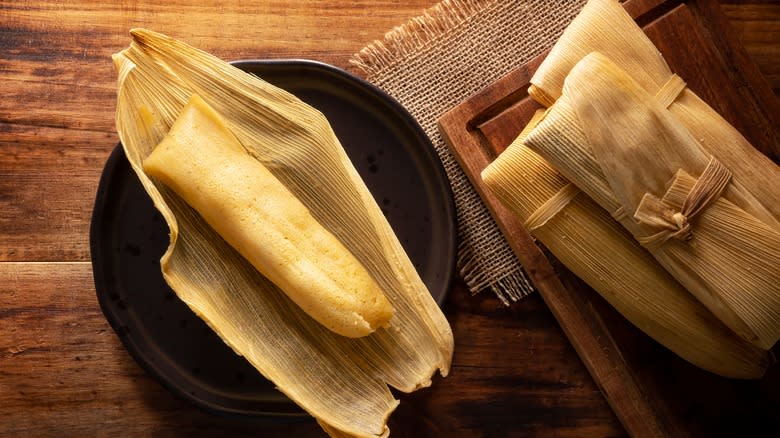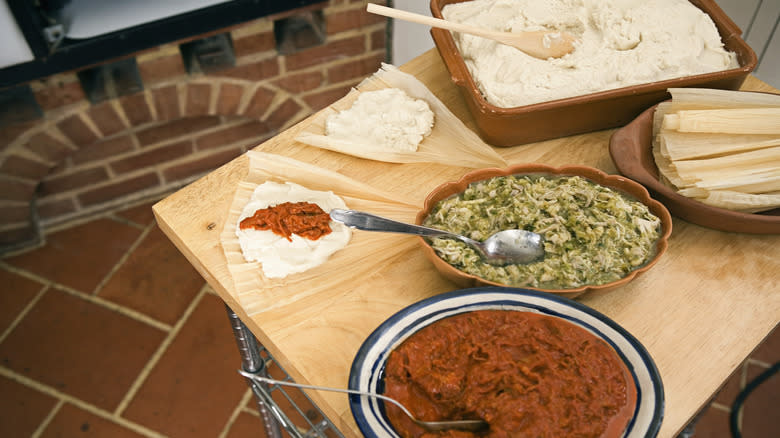If You Don't Have Lard, Use Vegetable Shortening For Tamales Instead

Corn is the foundation of Mexican cooking and a key part of Mexican heritage and identity. The ancient Aztecs engineered a way to process corn called nixtamalization, resulting in the savory masa used to make tortillas and all their delicious derivatives. While most corn masa is dry cooked on a comal or deep fried into empanadas, tamales fashion corn masa into comforting steamed dumplings. With the help of lard, corn masa becomes a rich, firm yet fluffy dumpling filled with savory meat, cheese, vegetables, or even sweets.
Lard is another important ingredient used to add flavor and fluffiness to dishes like flour tortillas, refried beans, empanadas, and churros. If you don't have lard, vegetable shortening is an ideal substitute. Made from hydrogenated vegetable oil, vegetable shortening has the same congealed, gel-like consistency and white hue as lard and emulsifies just as easily into corn masa. Most importantly, vegetable shortening has the same effect on the texture of tamales, acting to bind the masa while also giving tamales their characteristic moist, pillowy, and tender bite. Shortening has a neutral flavor that won't interfere with the savory earthiness of the corn masa or its myriad savory, spicy, and sweet fillings. Plus, you don't need to make any measurement adjustments when substituting lard for shortening as the two are often used interchangeably in recipes like biscuits, pie crusts, and pastries.
Read more: The 20 Best Olive Oils For Cooking
Other Lard Substitutes And Tips For Making Tamales

Vegetable shortening is a meat-free and dairy-free substitute for lard, allowing you to serve tamales to meat eaters and vegans alike. That said, there are other substitutes for lard that will work well in tamale recipes as well, like refined coconut oil, butter, and avocado oil. Chicken fat and bacon fat will supply a similar flavor profile to lard but aren't as easy to buy off grocery store shelves.
Tamales are a special treat and a classic Christmas dish in Mexican households because they're a tedious labor of love. Tamale dough is sticky and wet but has a propensity to fall apart during cooking and dry out or harden during storage. Consequently, it's important to ensure that you thoroughly cover the entire surface area of each tamale with corn husks, using two or more to overlap each other if necessary. Furthermore, you'll need to soak the corn husks so that they are pliable enough to fold without crumbling or cracking.
You'll fold the corn husks burrito-style to create the classic rectangular-shaped tamales. Like a burrito, you'll need to leave a substantial perimeter of masa surrounding a tablespoon or two of sweet or savory filling. Tamales taste the best fresh from the steamer as they tend to dry up the longer they sit out. If you have leftovers, reheat them in their husks in a steamer or saucepan filled with an inch of water and covered over low heat for around 20 minutes.
Read the original article on Tasting Table.

 Yahoo Finance
Yahoo Finance 